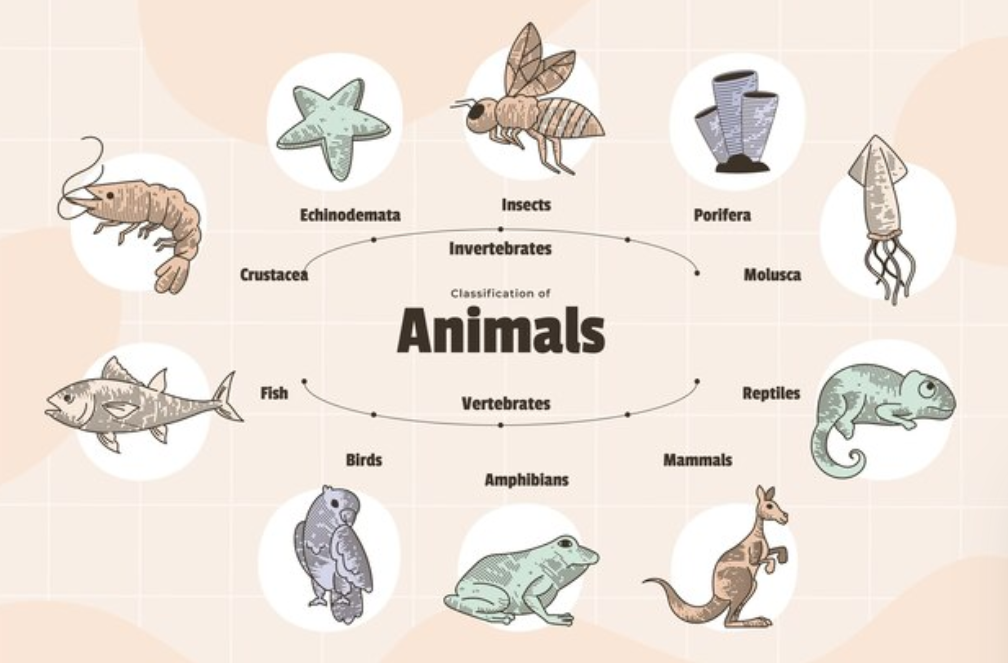Animals by biological groups
Animals are divided into a number of biological groups according to their unique traits and evolutionary connections. Researchers and scientists may better examine the similarities and differences among various species and comprehend the variety of the animal world with the use of this categorization system. The main biological classifications of animals will be discussed in this article, along with examples of species from each class.
1. Mammals
Warm-blooded vertebrates and mammals have mammary glands that provide milk to support their offspring. They breathe air via their lungs, have hair or fur, and give birth to live young. Mammals include, among others, people, dogs, cats, elephants, and dolphins.
2. Birds
Warm-blooded animals and birds are distinguished by their beaks, feathers, and capacity for hard-shelled egg-laying. They can move in the air because of their wings and lightweight, flight-adapted skeleton. Among the most popular bird species are owls, hummingbirds, penguins, parrots, and eagles.
3. Reptiles
Reptiles are scaly-skinned, cold-blooded creatures that deposit amniotic eggs on land. Their respiratory system is well-developed, and they are usually found in a variety of settings worldwide. Reptiles include, among others, lizards, turtles, crocodiles, snakes, and alligators.
4. Amphibians
Cold-blooded creatures that inhabit both land and water are known as amphibians. During their life cycle, they go through metamorphosis, beginning as aquatic larvae and ending as lung-bearing adults. Amphibians that are well-known include salamanders, newts, toads, and frogs.
5. Fish
Fish are aquatic vertebrates with gills for breathing and fins for propulsion. They are cold-blooded animals. They inhabit both freshwater and saltwater habitats, among other aquatic conditions. Fish include trout, salmon, goldfish, sharks, and clownfish, to name a few.
6. Invertebrates
Animals without a vertebral column or backbone are called invertebrates. This category, which includes several classifications, including insects, arachnids, mollusks, and crustaceans, makes up the bulk of animal species. Among the invertebrates, insects are the most varied category. Examples of these include butterflies, bees, ants, and beetles.

7. Echinoderms
Marine invertebrates, known as echinoderms, are distinguished by their radial symmetry and spiky skin. They can move around and eat more easily because of their special water vascular system. Sea cucumbers, sand dollars, sea urchins, and starfish are echinoderms.
8. Cnidarians
Water-dwelling invertebrates known as cnidarians are equipped with specialized cells called cnidocytes that house stinging structures known as nematocysts. They include animals like jellyfish, corals, sea anemones, and hydroids, and they have radial symmetry.
